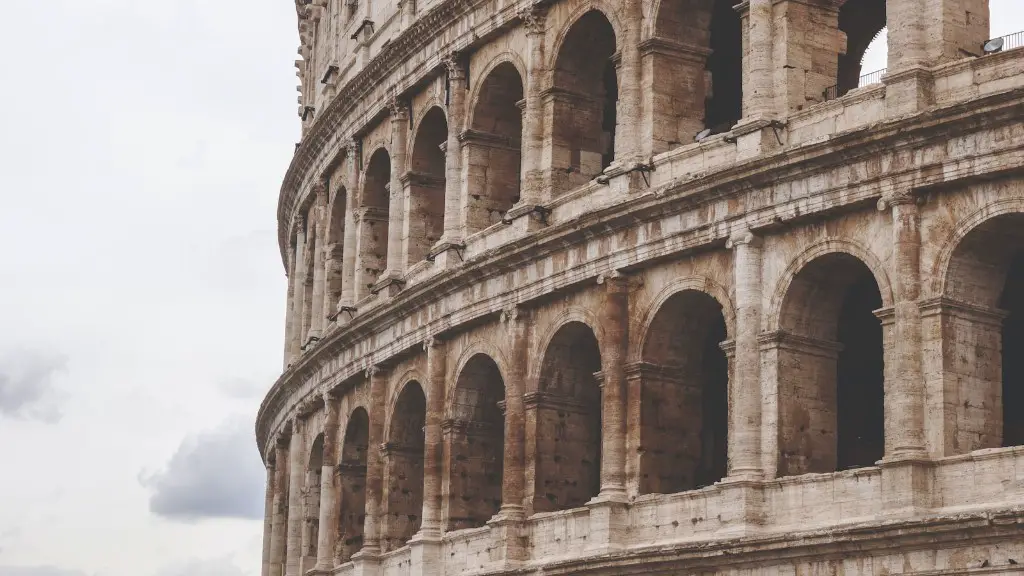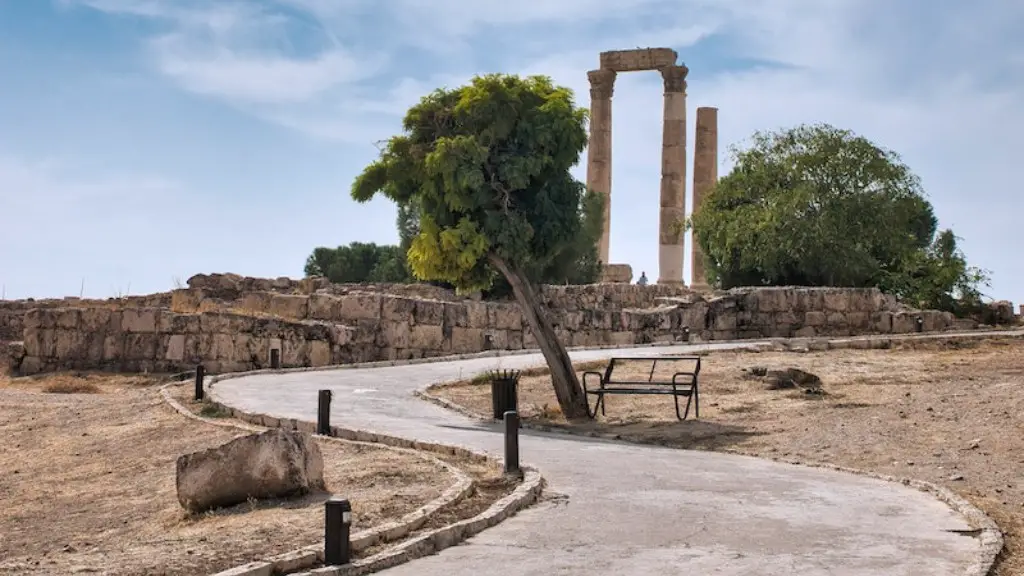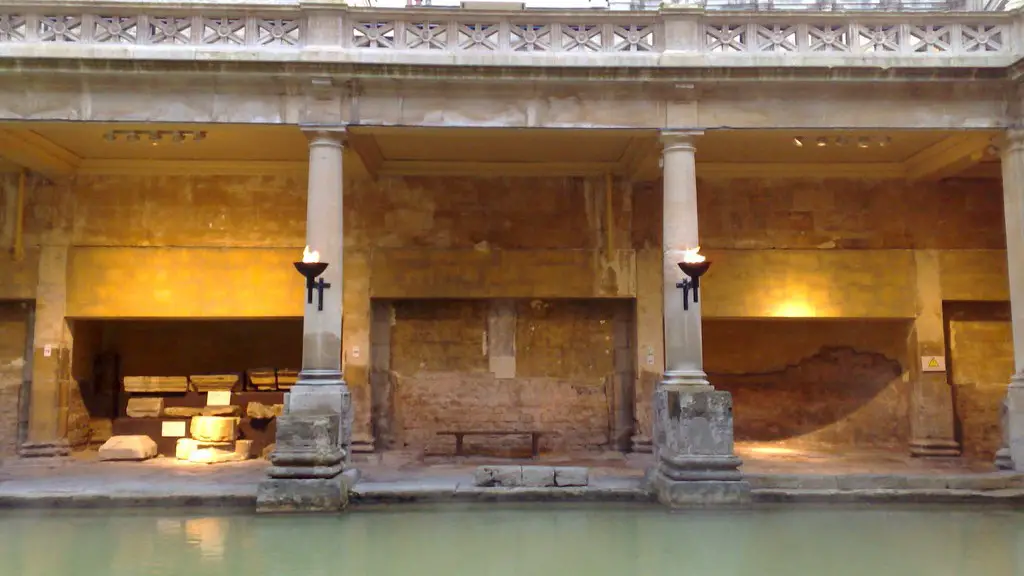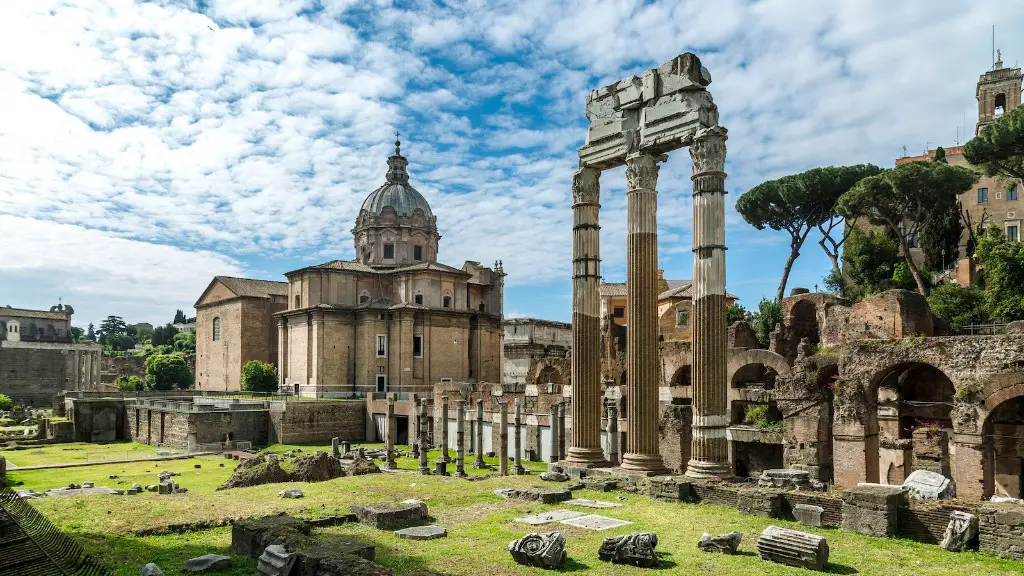The Ancient Roman citizens enjoyed a luxurious and diverse diet, rich in flavours and rich in processing methods. Fish, meat, vegetables, and fruit were staples, with Roman cooks taking great care in creating delicious dishes catering to a variety of tastes. By learning about what the ancient Romans used to eat, we can have a better understanding of ancient Roman life then, now, and forever.
The basics of Ancient Roman cuisine relied heavily on what the surrounding areas harvested and produced. The land was rich in olives, wheat, and grapes, which were all used to create a variety of dishes, breads, and wines. Ancient Romans religiously followed agricultural methods, relying on the four seasons to dictate their methods of growing and harvesting crops.
As a means of survival, Ancient Romans were able to count on two staples: bread and wine. These two elements were often used in their main meals, called cena. Many ancient Roman dishes were made from wheat and barley, which were used to create breads and cakes, and from grapes, which were used to make wines. Eggs, cheese, and honey were also widely used and widely enjoyed.
The diet of the Ancient Romans was quite varied. They ate different types of meat such as beef, pork, mutton, chicken, duck, and goose. They often ate fish, either fresh or salted. Some of their favorite vegetables included turnips, onions, artichokes, cucumbers, and lettuce. Ancient Romans also liked to indulge in sweet treats like custards, sweet pastries, and desserts made with honey. Grains were a main staple in the diet and were used to make breads and cakes.
The ingredients used to make Ancient Roman food often came from the local markets, where farmers sold their produce. Fruits and vegetables were procured from the countryside and even from far away exotic lands like Egypt, Syria, and India. Meat was sourced from the butcher, fish from the waterfront, and wine from the nearby vineyards.
The Ancient Romans were not just passionate food eaters; they were passionate food makers. A wide selection of spices and herbs were used to add flavor and complexity to their recipes. Garlic, pepper, onion, rosemary, thyme, peppermint, and fennel were used to spruce up dishes and enhance the flavor profile of each one.
Cooking for Ancient Romans was a ritual and often a source of comfort. Roman cooks used a range of methods to prepare their meals, from boiling and steaming to grilling and baking. Ancient Roman recipes brought together aromas from the kitchen and a myriad of flavors to the plate.
Wines played an important role in Ancient Roman society, with various types produced for various occasions. Reds and whites were both popular, with variations and blends coming into existence as the Romans honed their winemaking techniques. Even today, the techniques used by the Ancient Roman winemakers are still being used.
The Influence of Ancient Roman Cuisine in Modern Society
Ancient Roman cuisine has had a profound influence on modern food culture. The dishes invented and devised by the Romans can still be enjoyed in modern society today. There are a variety of dishes and recipes that stem from Roman kitchens, including lasagna, pasta, pizza, focaccia, smoky-flavored meats, and a variety of cheese varieties. The food customs that the Romans passed down have stood the test of time and remain important to society, from the art of fine dining to the sharing of a great meal in homes.
Ancient Roman food customs, such as consuming meals in courses and serving food with utensils, are still observed today. Romantic candle-lit dinners and meals adorned with flowers were practiced by the Ancient Romans and inspiring taste buds everywhere in modern society, inspiring modern chefs and home cooks alike.
Ancient Roman cooking, even though it is centuries old still has a huge impact on modern-day cooking. The cuisines of Italy, France and other Mediterranean countries have been heavily influenced by ancient Roman cooking, as have several other countries. The popularity of pasta, pizza, and other dishes that have evolved from Ancient Roman recipes indicate just how the culture has infiltrated into modern cuisine.
Ancient Roman cuisine is much more than just a collection of long-forgotten recipes – it has shaped the way we cook, eat and entertain today. Examining the methods, ingredients, combinations and techniques employed by the Romans reveals a sophisticated way of eating and cooking.
The Ancient Roman Meal Structure
The Ancient Roman meal structure was quite elaborate and often composed of multiple courses and a range of different dishes. The Roman meals were divided into the two main courses: cena and prandium. Cena was the main meal of the day and usually consisted of several hot dishes and side dishes, accompanied by wine and cheese. Prandium was a light afternoon meal, consisting of smaller portions of food, usually taken in between cena and bedtime.
The Romans were very particular about how they served their food. Food was served in courses, with each accompanying a specific type of dish and the typical accompaniment of wine. The courses were often divided into upper and lower courses, with upper courses consisting of hot dishes and lower courses consisting of salads, desserts, or cheese. Wine accompanied each course, with red and white offered for selection.
The Romans also enjoyed snacks between meals, such as cheese and olives or fruit and nuts. Appetizers or small treats also featured as a way to start the meal and encourage conversation between guests.
In addition to food, Roman meals featured other forms of entertainment. Music, poetry recitals, and other forms of artistic expression were commonplace at mealtime. Gambling was also a common pastime, with board games like latrunculi, tabula and the extremely popular dice game of tali becoming popular in society.
Food Network in Ancient Rome
The Ancient Roman food network was quite sophisticated. The wealthy citizens employed cooks to help them with their meals, while the poor were content with playing an important role in the kitchen. Food was locally sourced, often at nearby markets and farms, while wealthier citizens had access to foods such as oysters, seafood, nuts, and fruits from merchants.
Roman cooks also would go out of their way to span the boundaries of the empire, sourcing spices and ingredients from far away lands such as India, Africa and Syria. These ingredients were often then transported back to Rome and sold a premium prices, making them accessible to the wealthy citizens.
As a result, Ancient Roman cuisine was very diverse, with chefs mixing and matching flavors from around the empire. From luxurious dinners for the wealthy to simple meals for the poor, the variety of tastes and dishes available in Ancient Roman times would not be matched until much later in history.
The Influence of Foreign Cuisines on Ancient Roman Food
The Ancient Romans were a society that was exposed to foreign influences and over time these influences seeped into Roman cooking and cuisine. Influences from the surrounding countries were incorporated into Roman dishes, resulting in a fusion of flavors and dishes. Dishes such as the popular julie, a fish dish thought to have originated in Egypt and adapted to the tastes of the Ancient Romans, were the result of many foreign influences.
The Greeks played an important role in the influence of Ancient Roman cuisine. The use of spices and herbs, the concept of a certain type of food being eaten for specific occasions, and the ritual of a long, leisurely dinner similar to the banquets of the Greeks, were all adopted by the Ancient Romans.
Chefs of Ancient Rome also incorporated foreign pastries, desserts, and savory foods into the taste profiles of Roman dishes. Favored foreign ingredients, such as olives, pine nuts, basil, and saffron were embraced and have since become staples in modern Mediterranean dishes.
How Ancient Roman Cuisine Is Celebrated in Modern Times
Today, Ancient Roman cuisine is celebrated and revered in a variety of ways. Art, films, books and television shows have all paid homage to the art of cooking in Ancient Rome. Ancient Roman cookbooks, preserved by scholars and researchers, have also provided insight into the culinary delights and techniques of Roman cookery.
In modern Italy, ancient Roman cuisine and cooking is celebrated in a variety of ways. Restaurants, hotels and bed and breakfasts have opened their doors to visitors, offering up traditional Roman dishes paired with delicious wines from local vineyards. Food tours also allow visitors to explore the flavors and aromas of Ancient Rome.
Modern chefs, inspired by traditional Roman cuisine, draw influence from the Roman approach to cooking and capitalize on the techniques and flavor profiles employed by Roman cooks centuries ago. This can be seen in the way the cuisine has evolved, with chefs incorporating ingredients such as olives, pine nuts, and capers into modern dishes.
The traditions and customs of Ancient Roman cuisine can also be seen in modern Italian culture. Family-style meals and the concept of linking cuisine to culture, as the Ancient Romans did, are still observed in Italian homes today. Celebratory feasts, complete with a variety of flavors, colors and aromas, remain an important tradition in Italian culture.





